Torrijas (Spanish Style French Toast)

Torrijas, sometimes called torrijas de leche, are a traditional Spanish dessert, usually enjoyed all year round, but especially during the Easter period. Slices of stale bread are soaked in milk, dipped in beaten egg and fried in hot oil, then covered with a mixture of sugar and cinnamon: it is a preparation similar to French toast, perfect for breakfast or Sunday brunch.
What Are Torrijas?
Torrijas (pronounced as toh-REE-hahs), a beloved Spanish dessert, have a rich history that dates back to at least the 15th century. Originally a clever way to use up stale bread, they are slices soaked in milk or wine, sweetened, and fried, resembling French toast. Traditionally, torrijas were eaten during Lent, when meat was off the table, offering a simple, satisfying treat. Their origins are linked to the monasteries of Spain, where nuns would make them as a humble but indulgent dish. Over time, they became a staple across the country, often served with cinnamon, sugar, or honey, cementing their place in Spain’s culinary traditions.
Pro Tips for The Best Torrijas
- Start with slightly stale bread, like a rustic loaf or brioche, to prevent sogginess.
- Let the bread fully absorb the milk or wine mixture for a rich, moist texture.
- Use whole milk or full-bodied wine for deeper flavor.
- Add cinnamon and lemon zest to the soak for an authentic Spanish touch.
- Fry in hot oil to achieve a golden, crispy crust without the bread absorbing too much oil.
- Drain on paper towels and dust with sugar and cinnamon while still warm.
- For an extra indulgence, drizzle with honey or syrup before serving.
French Toast Vs. Torrijas
French toast is typically soaked in a mixture of milk, eggs, and vanilla, then pan-fried. Torrijas, on the other hand, often use wine or milk infused with spices like cinnamon and lemon zest, and are fried in oil, giving them a crispier texture. Torrijas also have a historical connection to Lent in Spain, while French toast is enjoyed more broadly as a breakfast dish. The flavor profile of torrijas tends to be richer and more spiced compared to the often simpler French toast.
What's The Best Bread for Torrijas?
The best type of bread for torrijas is slightly stale, thick-cut rustic bread or brioche, as they absorb the liquid well without falling apart. If you don't have bread, you can use alternatives like challah or even a sweet loaf like panettone, which will add extra flavor and richness to the dish.
What is The Best Oil to Fry Torrijas?
The best oil for frying torrijas is a neutral, high-heat oil like sunflower or vegetable oil. These oils have a mild flavor and allow the torrijas to crisp up without overpowering their delicate taste. Olive oil can also be used for a more traditional Spanish twist, but stick to light olive oil to avoid a strong flavor.
What Can I Serve Torrijas With?
The possibilities are endless! Popular options include a drizzle of honey, maple syrup, or a dusting of cinnamon and sugar. You can also pair them with whipped cream, ice cream, or fresh fruit for an extra indulgent touch. For a more traditional Spanish twist, a glass of sweet wine or coffee complements them beautifully.
Can I Add Any Other Flavorings to Torrijas?
Yes, you can definitely add other flavorings to torrijas! Common additions include vanilla, orange zest, or a splash of liqueur like brandy or rum for a richer flavor. You can also infuse the milk or wine soak with spices like cloves, nutmeg, or even cardamom to give the torrijas a unique twist.
Can I Make Torrijas Ahead of Time?
Yes, you can make torrijas ahead of time, just know that they might lose some of their crispiness. Simply fry them as usual and store them in the fridge for up to 2 days. When ready to serve, reheat them in a hot oven or on a skillet to restore their crispness. Just wait to add any final toppings, like sugar or honey, until right before serving for the best texture.
Can I Freeze Torrijas?
Yes, you can freeze torrijas. After frying and cooling them, place the torrijas in a single layer on a baking sheet to freeze, then transfer them to an airtight container or freezer bag. They can be stored for up to 2 months. To enjoy, thaw them in the fridge and reheat in the oven or on a skillet to restore their crispness.
More French Toast Variations You're Going to Love
Strawberry French Toast Casserole
How to Store Torrijas
To enjoy them at their best, we recommend consuming the torrijas piping hot and immediately.
Ingredients
How to Make Torrijas
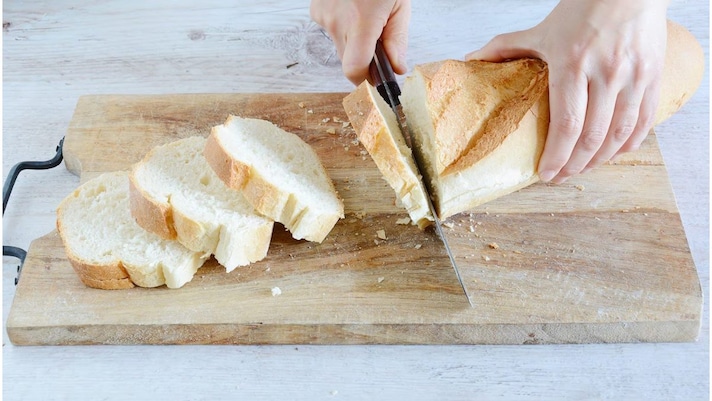
Cut the stale bread into slices about 2 centimeters thick.
Cut the stale bread into slices about 2 centimeters thick.
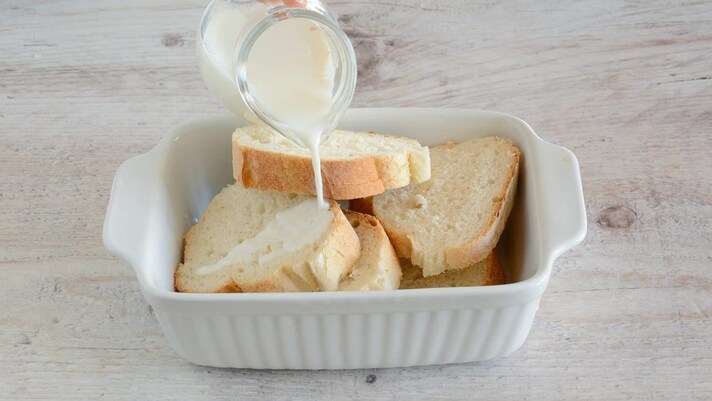
Transfer the bread slices to a baking dish or large bowl and drizzle with milk. Let them soak for about 10 minutes, until they are softened on all sides, and add more milk if necessary.
Transfer the bread slices to a baking dish or large bowl and drizzle with milk. Let them soak for about 10 minutes, until they are softened on all sides, and add more milk if necessary.
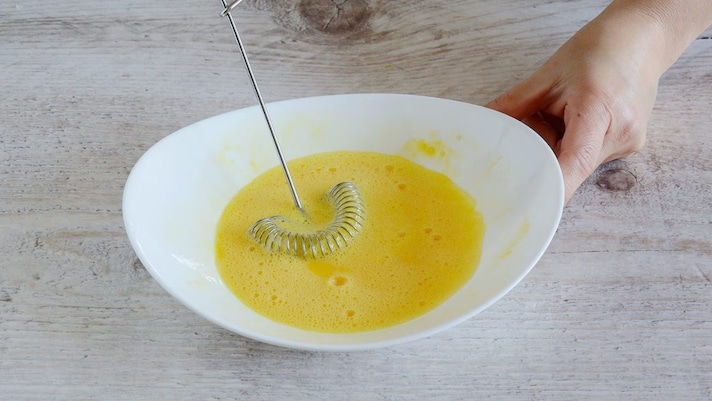
Once the bread has rested, heat the seed oil in a large pan and, in the meantime, beat the eggs in a large bowl.
Once the bread has rested, heat the seed oil in a large pan and, in the meantime, beat the eggs in a large bowl.
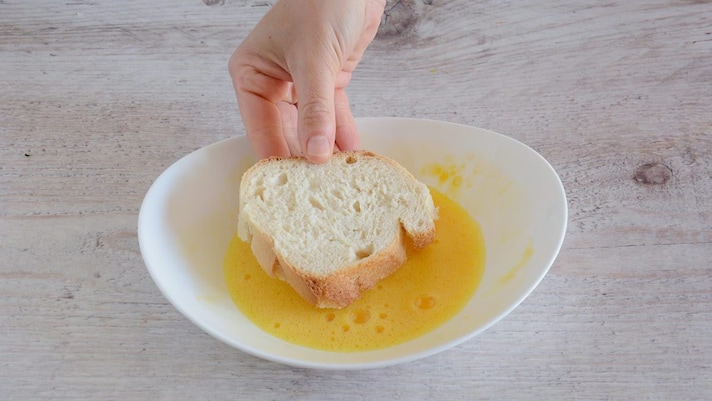
Drain the milk from the bread slices slightly, then pass them in the egg.
Drain the milk from the bread slices slightly, then pass them in the egg.
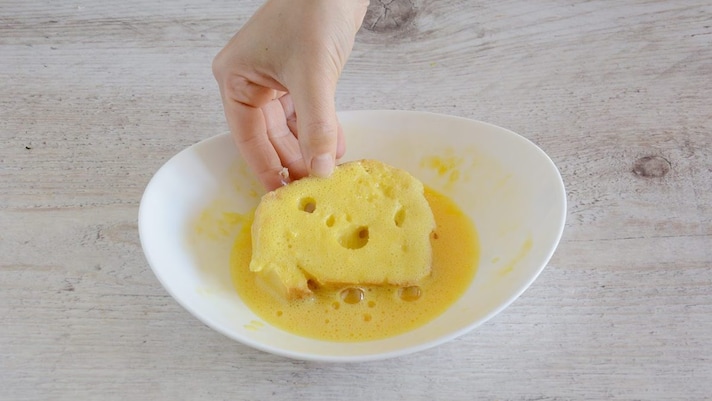
Turn them several times so that both sides are perfectly covered.
Turn them several times so that both sides are perfectly covered.
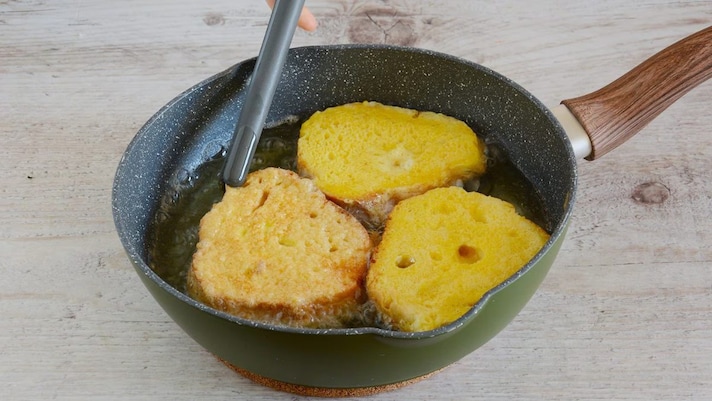
Fry them for 5-6 minutes in very hot seed oil, taking care to turn them halfway through cooking, when the first side is slightly golden.
Fry them for 5-6 minutes in very hot seed oil, taking care to turn them halfway through cooking, when the first side is slightly golden.
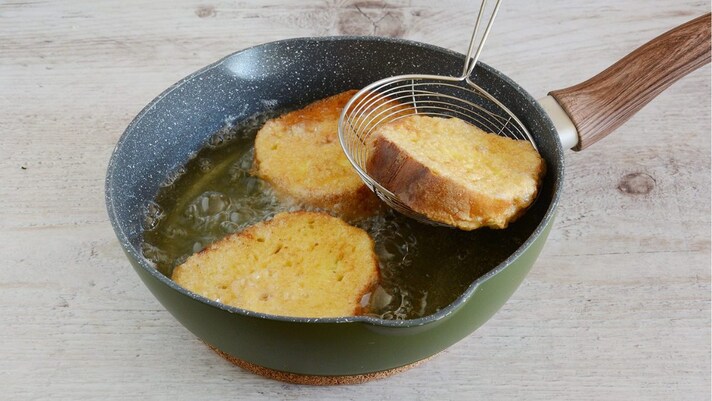
When both sides are golden brown, remove the fried bread slices with a slotted spoon.
When both sides are golden brown, remove the fried bread slices with a slotted spoon.
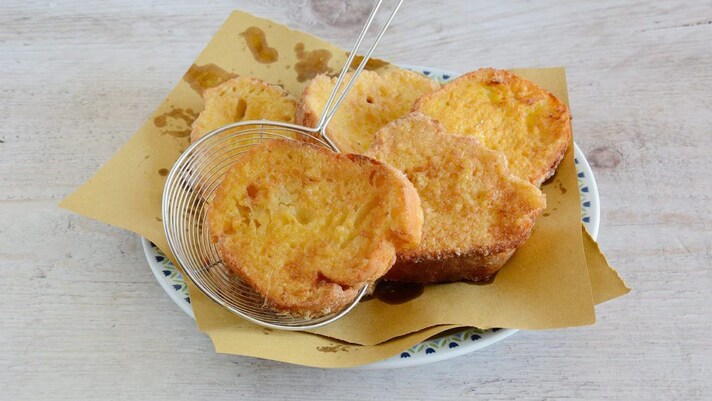
Transfer them onto a plate lined with straw paper or kitchen paper towels, so as to eliminate the excess oil.
Transfer them onto a plate lined with straw paper or kitchen paper towels, so as to eliminate the excess oil.
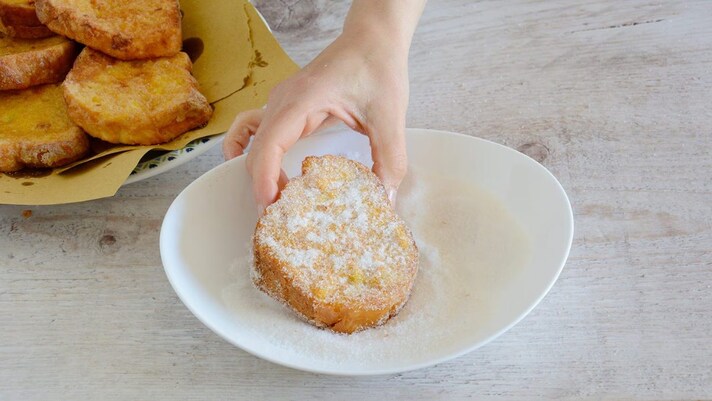
Collect and mix the sugar and cinnamon powder in a dish, then cover each slice of bread with the mixture, making sure it adheres well.
Collect and mix the sugar and cinnamon powder in a dish, then cover each slice of bread with the mixture, making sure it adheres well.
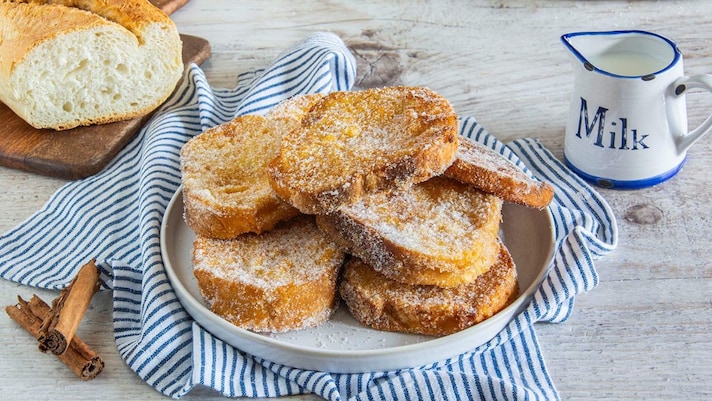
The torrijas are ready to be enjoyed, while still hot and crunchy!
The torrijas are ready to be enjoyed, while still hot and crunchy!
;Resize,width=767;)
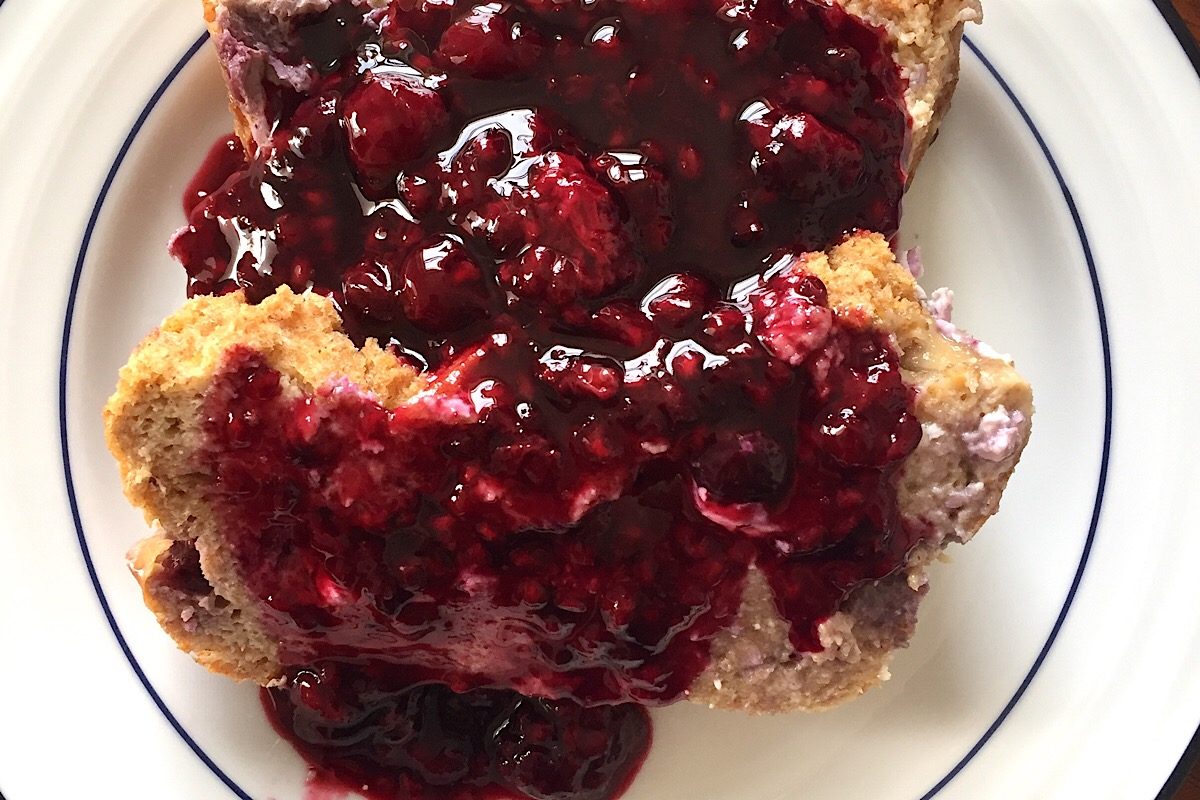;Resize,width=712;)
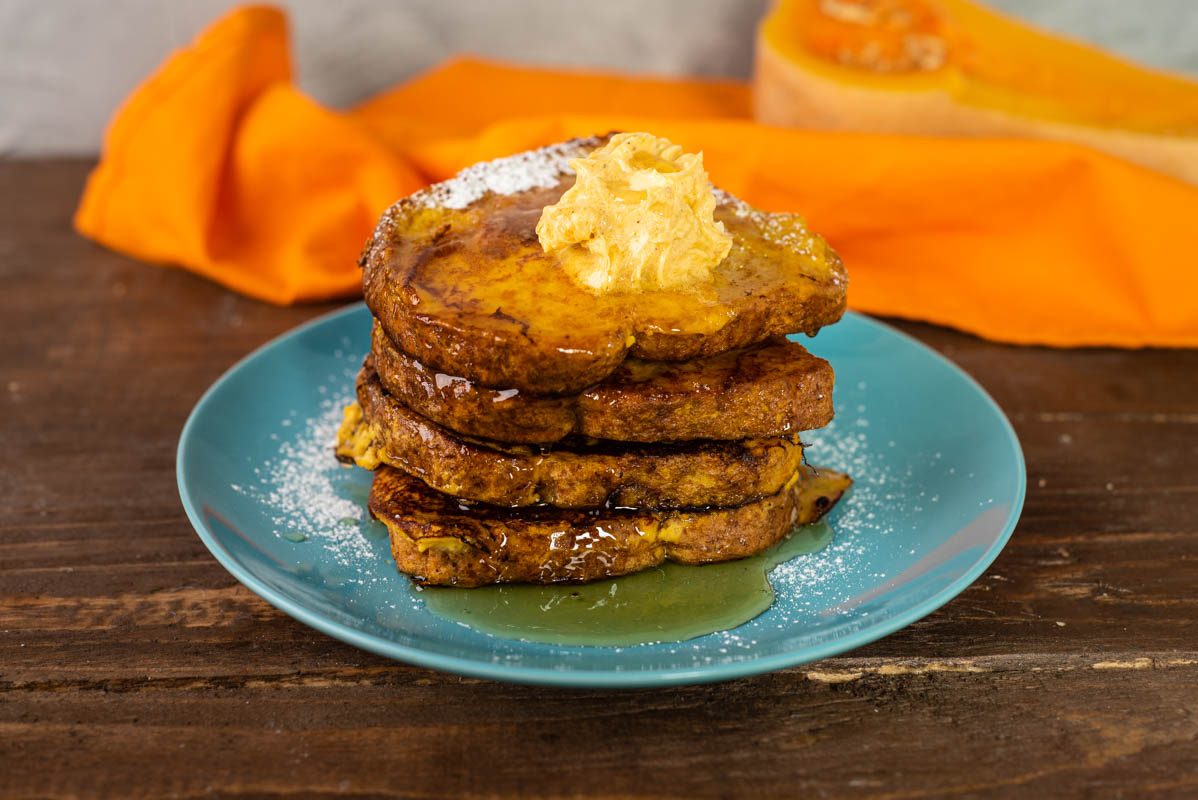;Resize,width=712;)
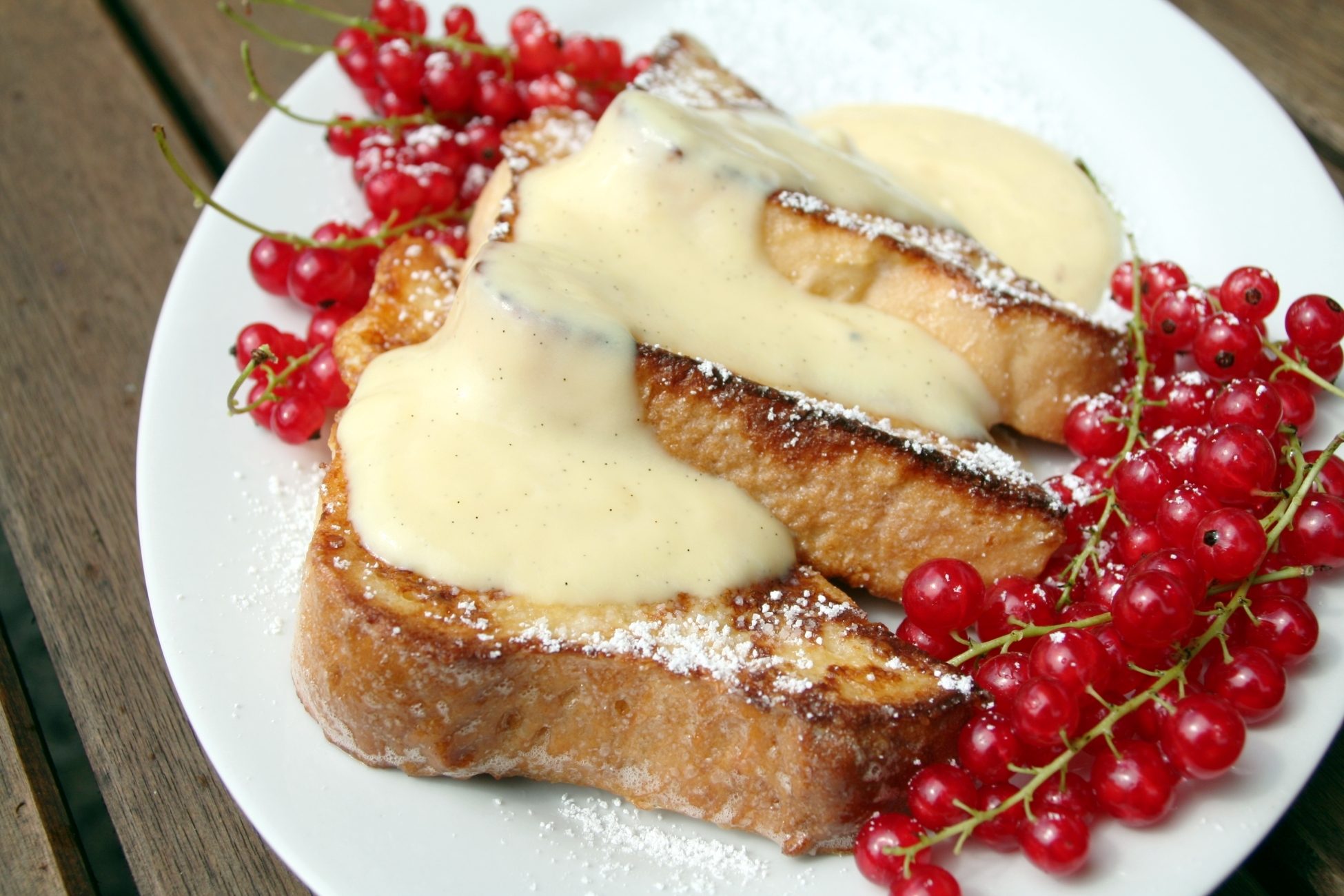;Resize,width=712;)
